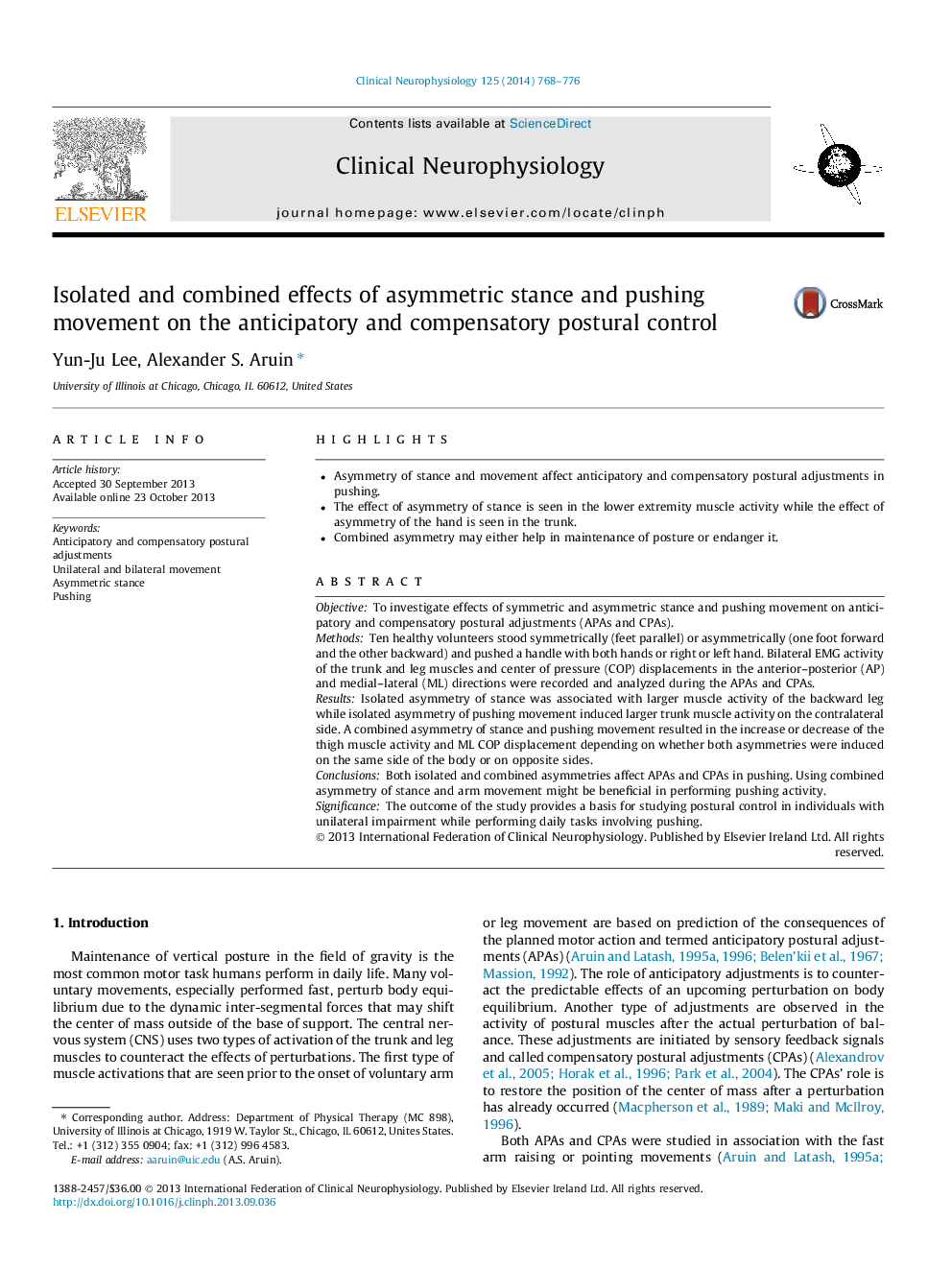| Article ID | Journal | Published Year | Pages | File Type |
|---|---|---|---|---|
| 6008418 | Clinical Neurophysiology | 2014 | 9 Pages |
â¢Asymmetry of stance and movement affect anticipatory and compensatory postural adjustments in pushing.â¢The effect of asymmetry of stance is seen in the lower extremity muscle activity while the effect of asymmetry of the hand is seen in the trunk.â¢Combined asymmetry may either help in maintenance of posture or endanger it.
ObjectiveTo investigate effects of symmetric and asymmetric stance and pushing movement on anticipatory and compensatory postural adjustments (APAs and CPAs).MethodsTen healthy volunteers stood symmetrically (feet parallel) or asymmetrically (one foot forward and the other backward) and pushed a handle with both hands or right or left hand. Bilateral EMG activity of the trunk and leg muscles and center of pressure (COP) displacements in the anterior-posterior (AP) and medial-lateral (ML) directions were recorded and analyzed during the APAs and CPAs.ResultsIsolated asymmetry of stance was associated with larger muscle activity of the backward leg while isolated asymmetry of pushing movement induced larger trunk muscle activity on the contralateral side. A combined asymmetry of stance and pushing movement resulted in the increase or decrease of the thigh muscle activity and ML COP displacement depending on whether both asymmetries were induced on the same side of the body or on opposite sides.ConclusionsBoth isolated and combined asymmetries affect APAs and CPAs in pushing. Using combined asymmetry of stance and arm movement might be beneficial in performing pushing activity.SignificanceThe outcome of the study provides a basis for studying postural control in individuals with unilateral impairment while performing daily tasks involving pushing.
